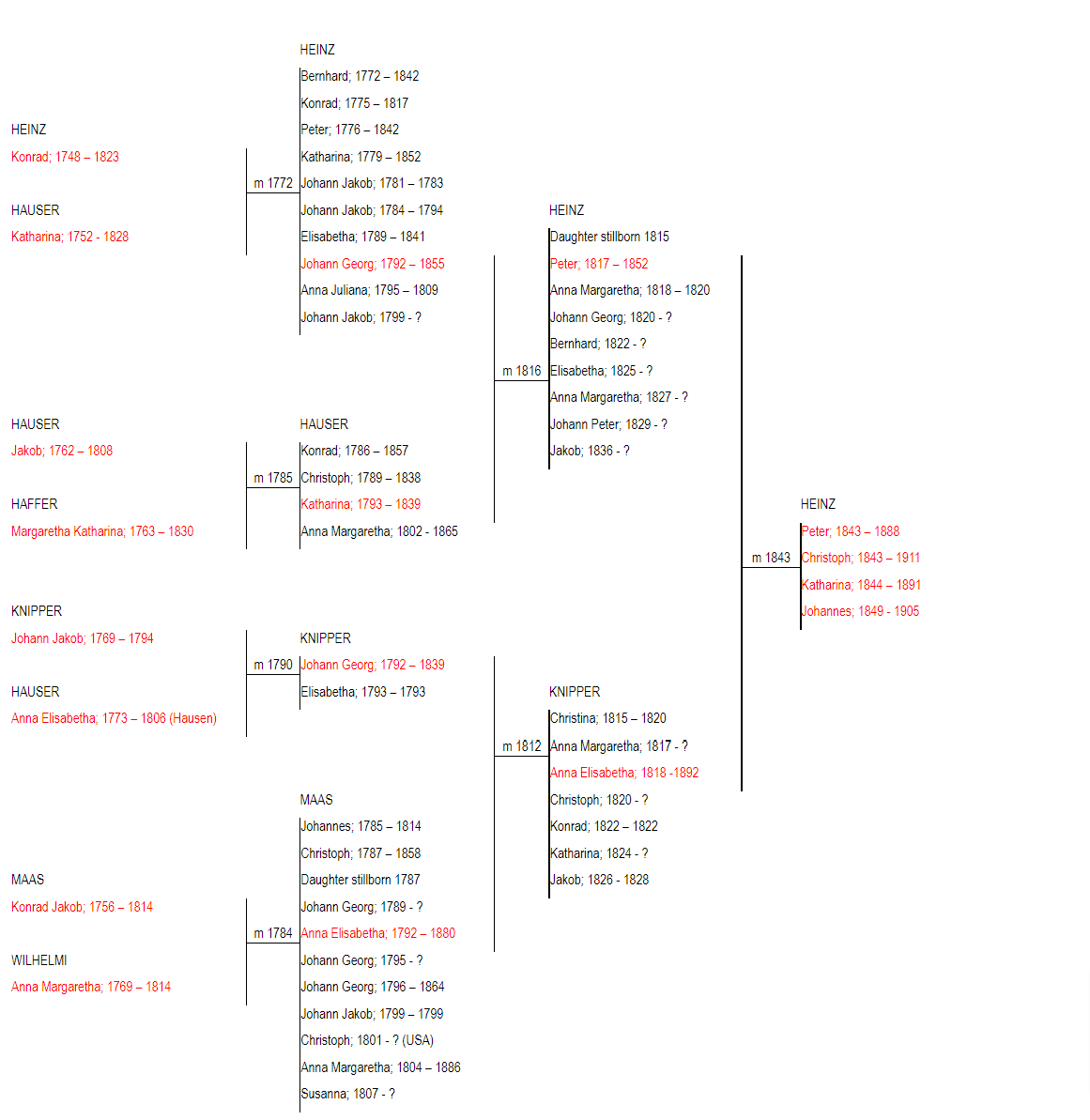Johann Peter HEINZ 1843-1888
By a few minutes only, Johann Peter was the eldest of the four children born to Peter Heinz III, farmer of Nieder-Weisel, and his wife Anna Elisabetha nee Knipper. This birth, followed quickly by that of a twin brother, Christoph, took place on 15th July 1843 in the Heinz family home. A sister, Katharina, was born on the last day of 1844, and another brother, Johannes, in 1849. Soon after this Anna Elisabetha was left to raise the children on her own as Peter died unexpectedly. In 1856, she decided to try and establish a new life for her family in the colony of Victoria. Leaving Johannes with foster parents, she and the older children left Nieder-Weisel with the largest group ever to migrate. They sailed out of Liverpool on the “Sunshine” on 5th November on a journey that would take them 20,000 km in the next 86 days, a prospect that must have excited the boys and their sister. The journey ended on 29th January 1857.
When the family reached Victoria, many diggers were working the goldfields around Smythes Creek, west of Ballarat. Anna Elisabetha settled her family in nearby Smythesdale. At about this time an emigrant from Butzbach (the nearest town to Nieder-Weisel), named Gernand Bang also arrived there. He set up a butchery in the main road, Brooke Street, in which the Heinz family managed a boarding house. The two boys, joined by Johannes in 1862, worked with Bang and became skilled butchers.
A romance developed between Katharina and Gernand, leading to their marriage in 1867. Soon after this the three brothers went into business in their own right, with financial support from Gernand. Later, they moved into Ballarat proper as Heinz Bros.
Their business flourished, additional outlets were opened and the range of services widened. Johannes and Christoph both married and settled in Ballarat but Johann Peter remained single. He became, like his brothers, actively associated with the German Club (Deutsch Verein), and was appointed Treasurer. His health deteriorated however and this forced him to retire from business and from public life when he was barely forty. He lived for another five years, becoming progressively worse until his death on 31st January 1888. The next afternoon his funeral left from the home of his grieving mother, at 14 East Street Ballarat, for the New Cemetery. An imposing marble monument marks his last resting place.
View Johann Peter's Family Chart

